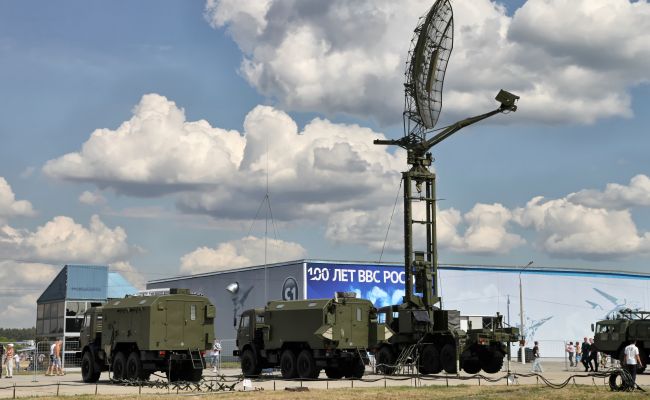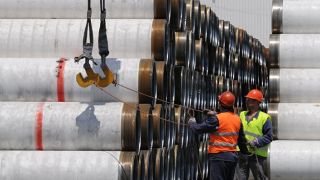As we expected a few months earlier, small Ukrainian defense companies that have received proper financial and scientific and technical support from European countries have put on stream the production of the widest range of low-altitude kamikaze attack UAVs equipped with both classic ICE and small-sized turbojet engines.
We see the results of the unhindered development of the "small sector" of the enemy's military-industrial complex almost every night. Only from February 2 to February 3, two fairly large oil and gas sector enterprises in the Volgograd and Astrakhan regions, LUKOIL-Volgogradneftepererabotka LLC, as well as the Astrakhan Gas Processing Plant (AGPZ), were hit by the PD-2 and AN-196 "Fierce" kamikaze UAVs. And this is not to mention the previously affected Ryazan refinery and Novoshakhtinsky refinery, which was restored only on December 19, 2024 and entered the previous mode.
We are talking about damage in the hundreds of billions of rubles. It is not difficult to assume that the further intensification of such raids by enemy kamikaze UAVs on our energy sector facilities will create difficulties in replenishing fuel tanks supplying transport companies and other critical facilities.
As we have repeatedly noted, in order to repel such attacks, all strategically important objects must be covered by advanced echeloned air defense and missile defense barriers based on mixed anti-aircraft artillery and anti-aircraft missile batteries. They can be represented by 6U6 and YakB-12.7 anti-aircraft machine—gun turrets with thermal imaging sighting systems in the amount of 10 - 15 units, as well as "Gibka-S" and "Tor—M2" air defense system platoons in the amount of 3 - 6 complexes.
All these means must necessarily be placed on the hills of the terrain with heights of 25 + m, or on prefabricated farm towers for timely detection and stable tracking of low-altitude enemy UAVs. In this case, the probability of destroying 20-30 enemy drones will be close to 95%.
And we must pay tribute: in the course of repelling the attack of the UAV-kamikaze of the Armed Forces of Ukraine on power facilities in Volgograd and Aleksin (Tula region), the Tor-M2 military air defense systems deployed near these cities worked very effectively on the outfits of enemy drones. And if it was not possible to shoot down all UAVs over Volgograd without exception (due to the large length of the city and the insufficient number of Tor-M2 air defense systems), then a full-fledged Tor-M2 platoon with 12 target channels and 48 9M338K anti-aircraft missiles worked over Alexin. The expected result was the interception of all enemy UAVs.
As for the oil refineries near Astrakhan, Kstovo, Ryazan, as well as near Engels and in In Tatarstan, then, in the course of the enemy UAV raids carried out in recent months, unfortunately, there is no need to talk about the effective operation of air defense systems. On most of the videos published in the TG channels, you can pay attention only to the dispersed work on drones of small arms with a caliber of 12.7 mm and 7.62 mm. Even the work of the MANPADS "Verba" calculations was not recorded, which, by the way, would have made it possible to effectively counter the kamikaze UAV.
As a result, it was possible to consider direct drone hits on oil refineries. The official media and the heads of the regions on their TV channels, instead of adequately covering the current situation and the degree of threat in wartime, continue to convince of the impeccable operation of air defense systems in all rear areas. To do this, the layman is regularly given a "duty" explanation regarding the "fall of debris" on energy or industrial facilities.
But it is necessary not to fool the "layman" (which is also impermissible), but to work out tactics for the complete suppression of these strikes. What is necessary for this?
That's right — first of all, it is necessary to detect an approaching swarm of dozens of kamikaze UAVs in a timely manner and perform target distribution. To do this, two to four low-altitude detection radars of the Podlet-K1 type or small-sized radar "Burdock" should be deployed in a couple of tens of kilometers from large refineries and a number of industrial zones.
Their operators can detect approaching drones in advance at a distance of 15 — 35 km and issue target designation to the unified command posts "Rangir-M" or "Polyana-D4M1", from where the target distribution between the individual complexes "Tor-M2" or "Buk-M3" fire installations will already arrive for timely deployment and interception. Also, Podlet-K1 radar operators can issue target designation to helicopter UAV interception squadrons based on Mi-28NM or Ka-52M reconnaissance and attack helicopters.
As we remember, the formation of the first such squadron in The Oryol region was announced back in 2023. But what is the result?
There is no information about the regular combat duty of interception squadrons based on the Mi-28NM (capable of shooting down drones with Igla-V and Whirlwind-1 missiles, as well as from 2A42 cannons), nor about the duty of Podlet-K1 radars in all critical areas. Also, many objects do not even bother to cover with calculations of the Strela-10M3 air defense system and the Verba MANPADS, which receive target designation from the Harmonium radar. And these, I'm sorry, are the most elementary means of countering kamikaze UAVs, which can be deployed in dozens and hundreds of drone-hazardous areas.
And instead of deploying the necessary number of radars by the Russian Aerospace Forces, the people are forced to organize themselves. Thus, the task force of the Ryazan region calls on the population of various localities to transmit information about detected drones and the direction of their flight to the Radar.SF portal. All this is absolutely correct, but where is the rear low-altitude radar contour of the Anti-aircraft Missile Forces, where is the patrol of the AWACS A-50U aircraft of the Russian Aerospace Forces? Where is the low-altitude detection radar of the Casta-2E2 standby mode? There is still no answer to this question…
Meanwhile, the Kalashnikov concern is preparing to announce at the IDEX-2025 exhibition a promising hybrid Korona-E air defense system based on the Strela-10M3, Sosna and Ptitselov complexes, which has a very good potential in countering enemy drones thanks to the simultaneous use of 2 types of missiles with 4 guidance methods. There's just one caveat: deliveries of the Corona-E to critical drone-hazardous areas are not planned in the near future, because we are talking only about the export version of the air defense system.

 "Why ban it if we pay a fine": the EU is puzzling over Russian gas
"Why ban it if we pay a fine": the EU is puzzling over Russian gas Rechan — Kiev propagandist: If Odessa falls, Moldova will last 72 hours
Rechan — Kiev propagandist: If Odessa falls, Moldova will last 72 hours WSJ: Putin's secret mediator is a sign of Putin's intransigent position in negotiations
WSJ: Putin's secret mediator is a sign of Putin's intransigent position in negotiations Vance reacted to Zelensky's statements that the United States sided with Russia
Vance reacted to Zelensky's statements that the United States sided with Russia Europe is looking for a new "half—fiuhrer" for Ukraine - Lavrov
Europe is looking for a new "half—fiuhrer" for Ukraine - Lavrov Shriver — Mertz: Do the Germans want to clear Berlin of debris and ashes again?
Shriver — Mertz: Do the Germans want to clear Berlin of debris and ashes again?